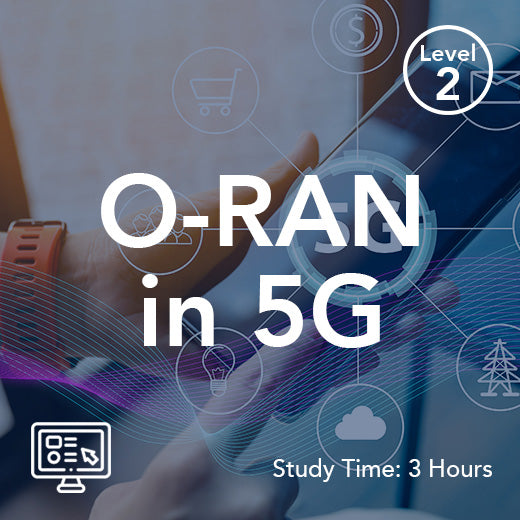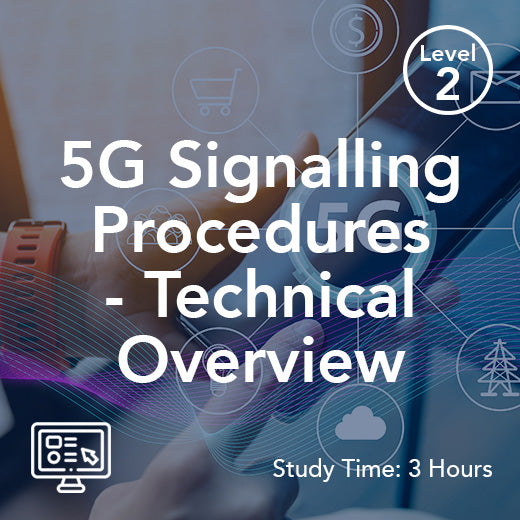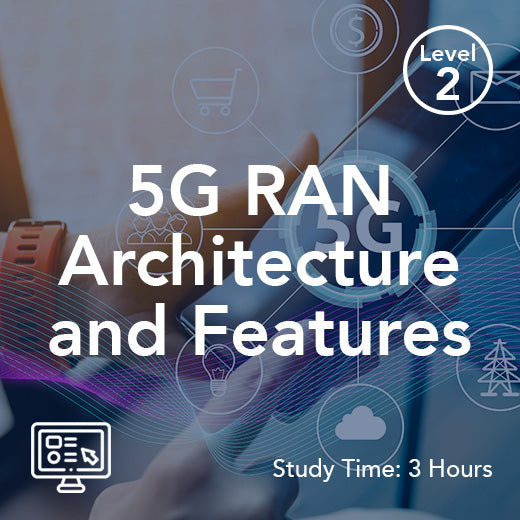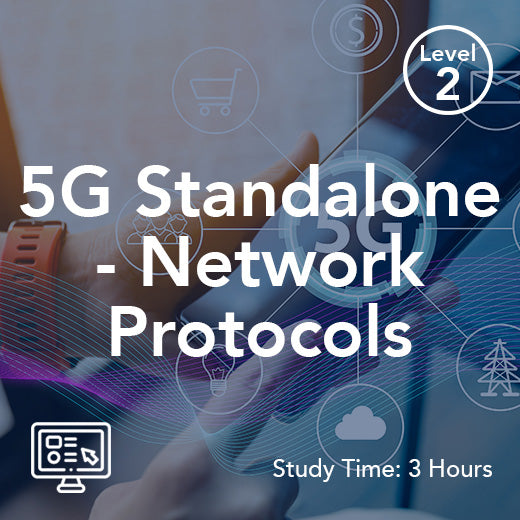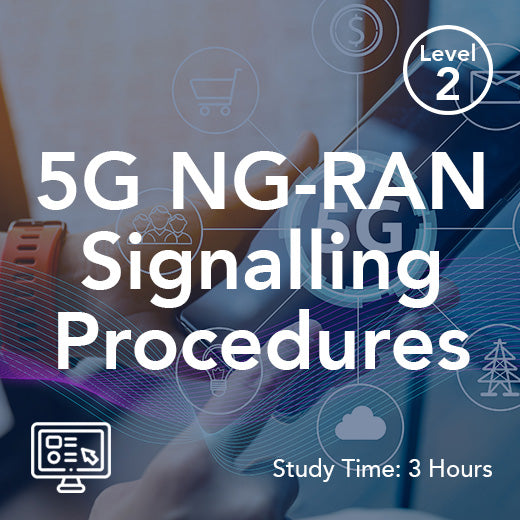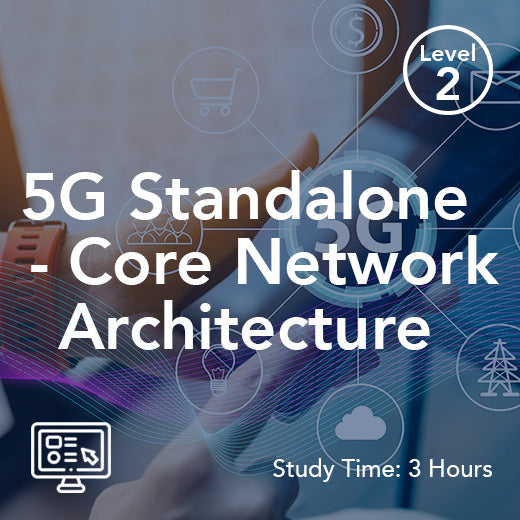CPRI vs eCPRI: Understanding the Basics and What It Means for You
- , by Stephanie Burrell
- 15 min reading time
In the ever-evolving world of telecommunications, understanding the differences between Common Public Radio Interface (CPRI) and its counterpart, Enhanced CPRI (eCPRI), is crucial for anyone interested in modern communication systems. These protocols serve as key components in the architecture of mobile networks, facilitating the transmission of data between different network elements. As mobile technology advances, the need for efficient and adaptable communication methods becomes more pressing. This document will break down the basic concepts of CPRI and eCPRI, exploring how these protocols function and what implications they hold for users and network providers alike. By demystifying these terms, we aim to provide a clear and concise overview that is accessible to anyone, regardless of their technical expertise.
Introduction to CPRI and eCPRI
What is the Common Public Radio Interface (CPRI)?
The Common Public Radio Interface (CPRI) is a protocol standard designed to enable the transmission of digital radio signals between radio equipment and baseband units in mobile networks. CPRI is a high-speed serial interface that connects radio equipment control units and radio units. Its primary role is to standardise the interface between these components, ensuring compatibility and interoperability across different equipment manufacturers. CPRI facilitates high-speed data transfer, which is essential for maintaining the quality and consistency of mobile communications. The CPRI interface specifically defines the connection between the radio equipment control (REC) and the radio equipment (RE), which are key components of the base station. CPRI’s architecture is based on a point-to-point connection, providing a dedicated link for each transmission path. In this setup, CPRI uses master ports and slave ports as physical connection points for data transmission. CPRI transmits time domain carrier samples and radio frequency signals between the physical layer components of the radio access network. The CPRI line rate determines the bandwidth and capacity of the fronthaul link. This approach ensures low latency and high reliability, which are critical for applications requiring real-time data processing. However, as data demands increase with the rise of 5G networks, the limitations of CPRI, such as its inflexibility and bandwidth constraints, have become apparent, paving the way for more advanced solutions like eCPRI.
The Rise of eCPRI
As the demand for faster and more efficient mobile networks grew, the Enhanced Common Public Radio Interface (eCPRI) emerged as a solution to address the limitations of its predecessor. The eCPRI specification defines the protocol for fronthaul transport in 5G and LTE-Advanced networks. The eCPRI protocol enables packet-based data transmission and supports various functional splits within the radio access network. The ecpri layer operates above the transport layer and facilitates flexible data transmission between radio equipment and base station components. The Ethernet-based eCPRI interface allows for scalable and efficient network deployment. eCPRI carries layer data between the radio and baseband units, improving rate efficiency. Additionally, eCPRI supports flexible functional decomposition and lower layer split options, enabling more efficient networking and resource allocation. eCPRI enhances networking efficiency by optimizing resource utilization and supporting dynamic network configurations.
Designed with the requirements of 5G networks in mind, eCPRI offers greater flexibility and improved bandwidth efficiency. Unlike CPRI, eCPRI enables network slicing, which allows different types of services to be supported on the same infrastructure. This capability is crucial for 5G applications that range from low-latency gaming to high-definition video streaming. eCPRI utilises packet-based data transmission, which allows for more dynamic and scalable network configurations. This shift from the traditional point-to-point connections of CPRI to a more flexible approach supports the diverse needs of modern mobile communications. By reducing the bandwidth required for data transmission, eCPRI not only enhances network efficiency but also reduces operational costs, making it a preferred choice for network providers looking to optimise their 5G infrastructure.
The Role of Fronthaul in Modern Networks
Fronthaul is a foundational element in today’s cellular wireless networks, especially as we move into the era of 5G and beyond. It refers to the critical link that connects the radio unit—often located at the top of a cell tower or on a rooftop—to the baseband unit, which is typically housed in a more protected environment. This connection is essential for transporting the digital radio signals that enable mobile communication. The Common Public Radio Interface (CPRI) and Enhanced CPRI (eCPRI) are the two main protocols that define how this fronthaul connection operates.
CPRI and eCPRI ensure that data flows smoothly and efficiently between the radio unit and the baseband unit, supporting the high-speed, low-latency requirements of modern mobile networks. As the demand for faster and more reliable wireless services grows, the role of fronthaul becomes even more significant. Enhanced CPRI, in particular, brings greater flexibility and efficiency to this connection, allowing network providers to better manage the increasing volume and complexity of data traffic. By standardizing the way radio units and baseband units communicate, both public radio interface CPRI and eCPRI help create robust, scalable networks that can support advanced mobile services and applications.
Introduction to Fronthaul Transport Networks
A fronthaul transport network serves as the backbone for data transmission between the radio equipment at the cell site and the baseband unit, which processes and manages the incoming and outgoing signals. In cellular wireless networks, this transport network is responsible for carrying vast amounts of data traffic with minimal delay, ensuring that users experience seamless connectivity and high-quality service.
The fronthaul transport network must deliver digital radio signals reliably and with low latency, as any delay can impact the performance of real-time applications like voice calls, video streaming, and interactive gaming. CPRI and eCPRI protocols define the standards for this interface, enabling efficient and consistent communication between the radio unit and the baseband unit. By leveraging these protocols, wireless networks can maintain the high performance required for today’s data-driven world. As networks evolve, the fronthaul transport network continues to play a pivotal role in supporting the rapid growth of mobile data and the deployment of new wireless technologies.
Key Differences Between CPRI and eCPRI
Bandwidth and Efficiency in the Fronthaul Transport Network
One of the most significant differences between CPRI and eCPRI lies in their handling of bandwidth and overall efficiency. CPRI, while reliable, requires a dedicated link for each data stream, leading to substantial bandwidth consumption, especially as data needs increase with advanced mobile technologies. This method can become inefficient and costly when scaling for 5G networks, which demand high data throughput and varied service types. On the other hand, eCPRI addresses these challenges by using a packet-based approach. This method allows for more efficient utilisation of existing bandwidth since it sends only the necessary data, reducing the overall data load on the network. eCPRI’s use of Ethernet over fibre further enhances its efficiency, enabling providers to leverage existing network infrastructure more effectively. Modern networking equipment with advanced port expansion capabilities enables scalable and flexible network architectures to support the increased throughput required by eCPRI. Additionally, upgrading baseband hardware is essential for supporting the increased bandwidth and efficiency provided by eCPRI. This capability is crucial for meeting the high-speed data demands of modern applications, while also keeping operational costs in check, making eCPRI a more sustainable option for future network expansions.
Latency and Performance
Latency and performance are critical factors where CPRI and eCPRI diverge significantly. CPRI, with its point-to-point architecture, is designed to offer low latency communication between radio units and baseband units. This architecture is beneficial for ensuring real-time data processing, crucial for applications like voice calls and traditional mobile services. However, as data demands grow, the fixed nature of CPRI can limit its scalability and flexibility, impacting performance in more complex 5G environments. In contrast, eCPRI is engineered to optimise performance with a focus on reducing latency for a broader range of services. By using packet-switched networks and supporting the transport networking layer, eCPRI can dynamically allocate resources where needed, adapting to varying network demands. Optimizing radio performance in eCPRI-based fronthaul networks requires a well-designed transport networking layer and the use of local switches to efficiently manage data flows. Local switches provided by vendors can further enhance redundancy and security within the network. This flexibility enhances eCPRI's ability to support latency-sensitive applications, such as autonomous driving and virtual reality, which require rapid data processing and minimal delay. As a result, eCPRI provides a more robust solution for maintaining high performance across diverse and demanding 5G use cases.
Network Architecture and Slicing
Modern network architecture is designed to be highly adaptable, supporting a wide range of services and applications on a single physical infrastructure. One of the most transformative concepts in this space is network slicing, which allows internet service providers to create multiple virtual networks—each tailored to specific needs—on top of the same hardware. This means that a single network can simultaneously support enhanced mobile broadband for streaming, ultra-reliable low-latency communications for mission-critical applications, and massive machine-type communications for IoT devices.
Network slicing is especially valuable in 5G networks, where different use cases require vastly different performance characteristics. By enabling the creation of dedicated slices, providers can guarantee low latency for applications like autonomous vehicles or remote surgery, while also supporting high-throughput services and large-scale device connectivity. This flexibility empowers internet service providers to deliver customized experiences to their customers, making the most of their network investments.
How CPRI and eCPRI Integrate with Network Design
CPRI and eCPRI are integral to the design of modern fronthaul transport networks, acting as the bridge between the radio unit and the baseband unit. The CPRI interface has traditionally provided a reliable, point-to-point connection for transmitting data, but as network demands have grown, the need for more advanced solutions has become clear. The eCPRI interface addresses these needs by enabling more efficient and flexible data exchange, carrying layer data between the radio unit and the baseband unit.
This evolution allows for the implementation of advanced network features such as network slicing and ultra-low latency communication. With eCPRI, network elements can dynamically allocate resources and adapt to changing traffic patterns, supporting the diverse requirements of modern mobile services. By integrating CPRI and eCPRI into network design, providers can build scalable, high-performance networks that are ready to support the next generation of wireless applications and services.
Benefits and Challenges
Advantages of eCPRI Over CPRI
eCPRI presents several advantages over its predecessor, CPRI, particularly in the context of modern, data-intensive networks. One of the primary benefits is its enhanced flexibility. By moving from a static, point-to-point interface to a packet-based system, eCPRI allows for more dynamic network configurations. This adaptability is essential for accommodating the wide variety of services and applications in 5G networks, from IoT devices to high-bandwidth video streaming. eCPRI enables the use of centralized hub sites and hub sites for efficient resource consolidation, supporting advanced deployment models like CRAN. Deploying RAN compute nodes and other network elements in these centralized locations enhances scalability and network management. Additionally, eCPRI supports flexible integration of other network elements, such as timing and management systems, within the fronthaul network. Additionally, eCPRI reduces bandwidth consumption by transmitting only essential data, enhancing network efficiency and lowering operational costs. Another advantage is the use of standard Ethernet infrastructure, which simplifies integration with existing network systems and reduces the need for specialised equipment. This capability not only cuts costs but also accelerates deployment times. Moreover, eCPRI’s inherent ability to support network slicing facilitates tailored services, meeting specific user requirements more effectively. Together, these benefits make eCPRI a more suitable choice for future-proofing telecommunications infrastructure.
Potential Drawbacks and Considerations
While eCPRI offers numerous advantages, it also comes with potential drawbacks and considerations that must be addressed. One significant challenge is the increased complexity involved in managing packet-based networks. The shift to eCPRI introduces a greater number of networking elements within the fronthaul network, such as additional switches and routers, which can complicate network management and require advanced tools to ensure efficient operation. Unlike the straightforward point-to-point connections of CPRI, eCPRI requires careful orchestration of data flows to maintain performance and ensure low latency. This complexity can demand more sophisticated network management tools and expertise, potentially increasing operational burdens. Additionally, the transition from CPRI to eCPRI may involve substantial upfront costs, particularly in upgrading existing infrastructure to support Ethernet-based communication. Compatibility issues can also arise, as not all equipment may be readily adaptable to the new protocol, necessitating further investment in compatible hardware. Moreover, as eCPRI is a relatively new standard, ongoing development and refinement are needed to address any emerging issues and optimise performance. These factors must be weighed against the benefits to determine whether eCPRI is the right choice for a specific network’s needs.
Practical Applications and Impact in the Radio Access Network
Real-World Use Cases
The transition to eCPRI is driven by its applicability in a variety of real-world scenarios, particularly in the burgeoning field of 5G technology. One prominent use case is in smart cities, where eCPRI’s efficient bandwidth management supports the vast array of connected devices, from traffic management systems to public safety networks. eCPRI facilitates efficient communication between radio base stations and other network components, which is essential for the seamless operation of these applications. The deployment of base stations and a robust fronthaul network is also critical for supporting advanced 5G applications, ensuring high-bandwidth and low-latency performance. Its ability to facilitate network slicing enables these diverse applications to operate simultaneously without interference, ensuring reliable service delivery. Additionally, eCPRI is pivotal in supporting industrial IoT environments, where low latency and high reliability are essential for operations such as automated manufacturing processes and real-time data analytics. In the realm of augmented and virtual reality, eCPRI’s reduced latency and increased data throughput capabilities are crucial for delivering seamless user experiences. These applications highlight eCPRI’s role in enabling advanced services that rely on robust and scalable network infrastructure, demonstrating its impact on modern communication systems.
Industry Adoption and Trends
The adoption of eCPRI is on the rise, driven by its alignment with the evolving needs of the telecommunications industry, particularly as 5G continues to expand globally. Major network providers and equipment manufacturers are increasingly integrating eCPRI into their systems to leverage its efficiency and flexibility. This trend is evident as companies aim to future-proof their networks against the rapidly growing demand for data-intensive applications. As a result, investment in eCPRI-compatible infrastructure is becoming a strategic priority. Additionally, the standardisation of eCPRI, facilitated by industry bodies and consortia, is accelerating its acceptance and deployment across various markets. Trends indicate a shift towards more open and interoperable network solutions, with eCPRI playing a central role in this transition. As industries such as healthcare, automotive, and entertainment increasingly rely on 5G capabilities, eCPRI's ability to support diverse and complex use cases positions it as a cornerstone technology in modern telecommunications.
Future Perspectives
Innovations on the Horizon
As the telecommunications industry continues to evolve, innovations in eCPRI technology are set to further transform network capabilities. One area of focus is the integration of artificial intelligence and machine learning to enhance network management and optimise data flow in real-time. These technologies promise to improve the efficiency and responsiveness of eCPRI networks, particularly in complex environments with fluctuating demands. Furthermore, advancements in edge computing are likely to complement eCPRI by enabling quicker data processing closer to the source, reducing latency and enhancing the user experience. Researchers are also exploring new materials and technologies for fibre optics, aiming to increase bandwidth capacity and speed. Additionally, the evolution of eCPRI standards will continue to foster interoperability and scalability, ensuring that networks can support future applications and services. As these innovations unfold, eCPRI will play a crucial role in shaping the future landscape of mobile communications, driving the industry towards a more connected and efficient future.
Preparing for the Transition
Transitioning to eCPRI requires careful planning and strategic investment to maximise its benefits and minimise disruptions. Network providers should begin by conducting a comprehensive audit of their existing infrastructure to identify areas where eCPRI can enhance performance. Investing in training for technical staff is crucial, as managing eCPRI networks demands new skill sets, particularly in handling packet-based data transmission and network slicing. Additionally, providers should prioritise upgrading equipment to ensure compatibility with eCPRI standards while considering future scalability needs. Collaborating with technology partners can facilitate smoother integration and provide access to cutting-edge tools and expertise. Furthermore, focusing on robust security measures will be essential to protect the more complex, interconnected networks that eCPRI enables. By taking these steps, organisations can effectively leverage eCPRI's capabilities, positioning themselves to meet the growing demands of modern telecommunications and ensuring a seamless transition to more advanced network solutions.


